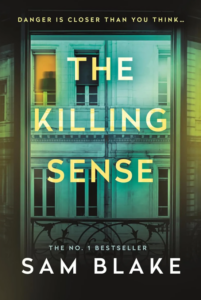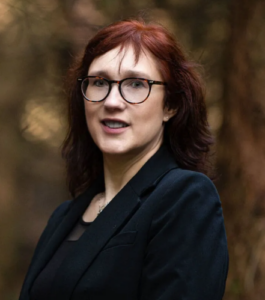Creative Learnings – Sam Blake
Author
Everything can be changed from draft to draft
The Killing Sense is my 12th book, and I now know from experience that everything can be changed from draft to draft. With early books it felt like I was chopping off my right arm if I had to delete a chapter – words sweated over were just so precious – but now I take a much more robust approach. I approached this book completely differently from previous books, but with that knowledge I knew I could take a risk and try something new and that if something didn’t quite work the first time, I just needed to give my head space to think about it, and I’d be able to fix it.
I’m not frightened of rewriting, I know it’ll make it a better book, but having said that, I was also working to a deadline so I needed to keep it in sight!
Stretch yourself as a writer
With every book, I’m trying to grow and become a better writer. I wanted to stretch myself in a new way with The Killing Sense, so rather than starting with a fairly clear idea of the plot, I started with a couple of hazy images in my head and let the characters guide me through the story.
When I start a book, I usually begin with the crime, who did it and significantly, why, and then think about the characters and location. I have the backbone of the story in my head – a big incident or incidents that lead us to a turning point, and usually the end scene before I start writing.
With The Killing Sense I wanted to see if I could write it and let it evolve – I know some writers who write in this way and I was interested in that process. So I started with the detail that perfume smells different on red heads and that made me think about France. I started thinking about women with red hair, and could see an image in my head of a woman with red hair on a train, and the man she met.
Because this story involved France, the Eurostar seemed to be the most likely train, and that brought me to Paris. Apart from that, I had some unrelated images – a suburban house with a bike leaning on the wall in the hall, footsteps in the snow leading across a courtyard (which didn’t make it into the book in this form) and I could see the man on the train standing on a stone landing outside an apartment at the top of a sweeping stone staircase. But that was all I had.
I didn’t know why the perfume was significant to the killer, I didn’t know how the killer would be caught, I didn’t know about Daniel’s back story. When I started writing, Maxim wasn’t a very nice character but he developed as the story did and I really liked him at the end, so I needed to change his relationship with Agathe in the second draft. I didn’t know where Sandrine worked or how she’d gone missing.
Thinking about the process for this article, I have to confess that I suddenly realised that I didn’t know the identity of the victim – whose head is found in the prologue – when I was about a third of the way through the book! This really was an organic writing process.
Writing organically is more challenging than doing the work beforehand
Looking back I’d probably counsel myself that not plotting at all would mean this book would take much longer to write, and be harder work because I didn’t know where I was going.
The ideas grew as the story developed. I was in Paris finishing a perfume course then I noticed a girl with butterflies tattooed down the back of her neck. I started seeing butterflies everywhere as I wandered about and I knew they were an important part of the story – but I didn’t know how at that stage.
Having never been there before, I had to make three trips to Paris to make sure that I was bringing the city to the page, so it was a completely different write to anything I’d done before.
Not plotting means much more editing, but you’ll find the story
The first draft was hugely long – 120k words and it took over a year to get finished. Fortunately, my first drafts are quite polished at this stage, but I knew I needed to axe about 30k words and I knew there were some chapters that might need the point of view changing.
I had story threads that needed developing, everything was there but elements needed exploring – Daniel’s past and how it fitted into the plot, and the character traits that make him act in a certain way were part of that.
There were some things I didn’t know happened until I wrote the end, so I had to go back to the start to foreshadow them in the narrative. Many elements of the backstory only emerged once I knew the present events, so (despite the need for fewer words) a lot of the mechanics of the story only came to the page in the second draft.
I knew that whatever approach I took, that I could trust my gut to come up with a story – the pacing and decisions about voices and what chapter comes next are instinctive at this stage and I’ve learned to trust my subconscious mind, but whether it would be a good story that worked, was a different matter!
 Sam Blake’s new novel, The Killing Sense, is out now.
Sam Blake’s new novel, The Killing Sense, is out now.
If you’d like specific career advice relating to your creative field, we run free workshops as well as free mentorships rounds.


